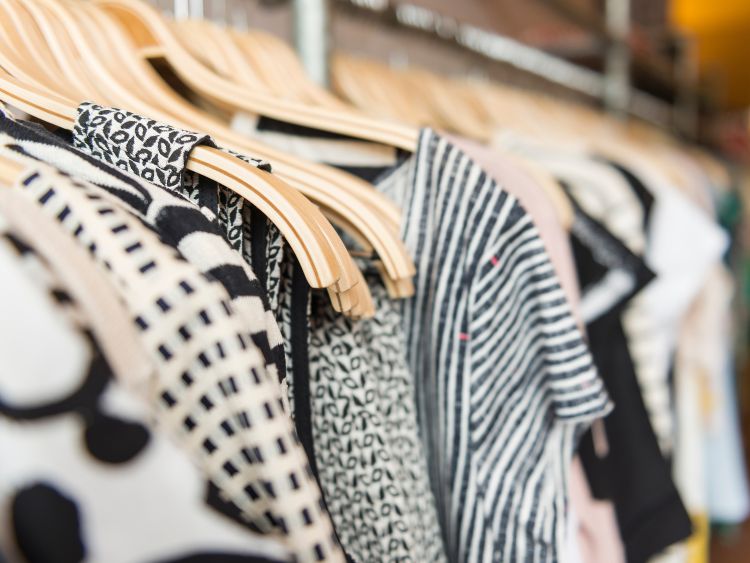In a time where fashion trends are changing rapidly it’s no wonder that the concept of being a clothing brand is more than an individual label. It’s now an attitude, a declaration and sometimes an entire movement. From high-end fashion houses to eco-friendly startups, fashion brands define the way we express our individuality and reflect the cultural contexts and are a force for the latest innovations. Understanding the core of a fashion label is more than just admiring clothes and focuses on the philosophy, art and the strategy behind the behind the scenes.
What Defines a Fashion Brand?
In essence the definition of a fashion brand is the name that represents the unique brand that is behind an assortment of accessories, clothing, or footwear. Although many associate clothing brands as luxury goods, this concept covers a broad spectrum of brands, from streetwear giants to eco-friendly lines and bespoke craftsmen. The key characteristic of a fashion brand that is successful is the ability to create an original story that is able to resonate with the target market.
Fashion branding is more than just aesthetics – it’s about connecting. A strong fashion brand builds trust and loyalty by demonstrating its beliefs, whether supporting inclusion, advocating for sustainable practices, or highlighting the past. In today’s highly competitive market an authentic brand image will turn consumers into long-lasting ambassadors.
The Evolution of Fashion Brands
The history of the fashion label has seen dramatic changes over the years. In the 20th century famous brands like Chanel and Gucci established the basis for modern branding by mixing the utmost in luxury with timeless design. These pioneers revolutionized the market changing clothes from functional objects into aspirational items.
The 21st century and the growth of social media platforms has changed the way fashion brands interact with their consumers. Social media platforms such as Instagram and TikTok let brands interact with their customers directly, blurring lines between traditional advertisements and personal connections. E-commerce, however, has created a level playing field which allows new designers to compete against established luxury brands.
The most prominent trends that has shaped the evolution of the fashion industry is the increasing importance placed on sustainability. Modern consumers demand transparency as well as ethical sourcing and accountability for the environment. Brands such as Patagonia or Stella McCartney have thrived by making eco-friendly choices a priority, showing that sustainability isn’t simply a buzzword, but rather an effective strategy for branding.
Building a Distinctive Fashion Brand Identity
If a fashion company is to succeed, its brand’s identity must be distinctive and cohesive. This is more than making attractive items but also cultivating an whole experience. The most successful brands are awash in telling stories, creating narratives that stir emotions and build the sense of community.
Visual branding is among the main factors that determine a fashion label’s success. A well-known logo and the same color palette, and creative photography for campaigns leave an impression that lasts. Imagine Nike’s swoosh or Louis Vuitton’s monogram. These symbols have lasted through generations and become synonymous with quality and ambition.
Alongside visuals, fashion brands depend on the importance of their culture to remain at the forefront. Collaborations with musicians, influencers and artists allow brands to reach new markets and maintain their image. Recently, the collaboration of Gucci as well as Harry Styles, for instance showed the ways that aligning with icons of culture can help reenergize a brand’s image.
Challenges in the Fashion Brand Industry
Although the fashion industry is awe-inspiring, it’s not without obstacles. The biggest challenges is keeping their relevance in an ever-changing environment. With fashion trends being the norm, a lot of brands are struggling to maintain affordability while incorporating ethical principles.
Counterfeiting is a different issue especially for high-end brands. Brands with a prominent image like Prada as well as Hermes invest a lot of money in anti-counterfeiting efforts, however the issue persists, and is threatening the exclusivity these brands try to maintain.
Economic volatility also poses major risks to fashion brands. When there is financial instability consumers tend to prioritize necessities over expensive purchases, which force fashion brands to alter their strategies. Despite these difficulties however, innovation and resilience continue to propel the market forward.
The Future of Fashion Brands
Looking towards the future, the direction of fashion brands is equally exciting and uncertain. Technology is expected to play an in a larger role through innovations like the virtual world, artificial intelligence and blockchain revolutionizing the way brands create their products, market and distribute their merchandise.
Sustainability will be a constant issue. Fashion brands must strike their way through the tricky balance between satisfying customer demands for new styles while reducing their environmental footprint. Circular fashion which encourages customers to reuse or recycle their clothes, are beginning to gain momentum.
The inclusion of all people is another major goal. From diversity in advertising to the creation of adaptive clothing for those who have disabilities, fashion companies are adopting a wider concept of beauty and function. This expansion not only increases their markets but also consolidates their standing as a champion for positive transformation.
Conclusion
The attraction of an clothing brand is in its capacity to transcend the physical and create an emotional bond that is deeply felt by consumers. Be it rooted in tradition, or driven by the latest trends Fashion brands are more than companies. They’re storytellers, cultural curators and innovators. As the fashion industry changes in the coming years, it will come down to the brands who remain in their original brand, leaving a permanent mark on the runway and in the real world.



